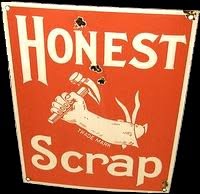
No. Not the Dalai Lama.
Not even a someone actually.
A something.
A very important something if you're a writer.
Not even a someone actually.
A something.
A very important something if you're a writer.
Honest.
But speaking of the Dalai Lama, he did say, "Happiness is not something ready made. It comes from your own actions."
And couldn't the same thing be said of the novels we write?
What was that bit of dialogue between Alice and the Mad Hatter?
Alice : "I've had nothing yet. So I can't take any more."
Hatter : "You mean you can't take any less. It's very easy to take more than nothing."
And isn't that what our novels start out as? Nothing. Then along strolls a colorful character, an intriguing situation blossoms in our thoughts, or a bit of zingy dialogue crackles in our mind's ear.
But what do you do with those isolated bits?
Ah, that's where the Dali-Rama comes into play as we shift to another bit of back-and-forth in the adventures of Alice.
"Which road do I take?," asked Alice.
"Where do you want to go?," replied the Cheshire Cat.
"I don't know."
"Then," smiled the cat, "it really doesn't matter."
But it does matter when you write a novel. You have to know where you are going if you're going to take the reader there. We need a compass. More importantly, we need a map.
We need the Dali-Rama.
And its motto is a twist to one of the sayings of the artist who gave birth to it : Salvador Dali --
Intelligence without direction is a bird without wings. As authors, we paint our novels. To paint well we need a canvas. Yes, you guessed it : the Dali-Rama.
Intelligence without direction is a bird without wings. As authors, we paint our novels. To paint well we need a canvas. Yes, you guessed it : the Dali-Rama.
How many times have you stared at a blank page in agony? Buy some 3 X 5 index cards. Write your characters on one, your bits of dialogue on another, your large, compelling situation on a larger one.
The great thing about those index cards is that you can fit them into your purse {or me into my backpack (what Sandra, my best friend, calls my "Man-Purse")}.
And whenever an idea for dialogue, plot, scene re-do, or character development hits you, you scribble it down upon your stash of ready index cards.
Now, buy a cork board.
Me, I take construction paper and tape it over the board. I get markers in different colors. And then, I'm ready to paint myself a novel.
Me, I take construction paper and tape it over the board. I get markers in different colors. And then, I'm ready to paint myself a novel.
This is not a story board. That directors do AFTER the script is written.
We're more like detectives sleuthing a murder case. All those bits of characters, dialogue, situations, plot twists. We pin them up on the board in haphazard fashion. No rhyme, no reason but our subconscious.
We're more like detectives sleuthing a murder case. All those bits of characters, dialogue, situations, plot twists. We pin them up on the board in haphazard fashion. No rhyme, no reason but our subconscious.
Then, step back. Look at the surrealistic pattern you've made. Start arranging patterns in the chaos. Draw lines on your Dali-Rama connecting your different characters along paths of love, blood, hate, and circumstance. Scribble questions next to each one :
"What drives him to strive for perfection? What shaped her into a lusty gossip? Why would anyone do {fill in the blank.} Why a bank job and not a jewel heist?
What skills does a cat burglar have? How would one go about obtaining those skills and knowledge?
"What drives him to strive for perfection? What shaped her into a lusty gossip? Why would anyone do {fill in the blank.} Why a bank job and not a jewel heist?
What skills does a cat burglar have? How would one go about obtaining those skills and knowledge?
From the answers to those or other similar questions are born more scribbled index cards.
By now, your muse will be churning. You will see how one character fits into another in ways you hadn't even thought of when you started.
You see where you can flip this situation on its ear, blending it into laughter, suspense, or tears.
You see where you can flip this situation on its ear, blending it into laughter, suspense, or tears.
Like Dali himself, don't let structure bind you to convention.
Look at the overall "feel" and "look" of the Dali-Rama. Remember the soft, melting pocket watch in Dali's famous "Persistence of Memory?"
It whispered that time is not hard as we thought. In fact, time is often irrelevant. Think of the time spent in a dentist's chair during a root canal.
Time changes according to circumstance. And so should the parameters of your novel.
Look at the overall "feel" and "look" of the Dali-Rama. Remember the soft, melting pocket watch in Dali's famous "Persistence of Memory?"
It whispered that time is not hard as we thought. In fact, time is often irrelevant. Think of the time spent in a dentist's chair during a root canal.
Time changes according to circumstance. And so should the parameters of your novel.
There is another beautiful thing about the Dali-Rama. It postpones the actual writing of the novel. And who of us has not hesitated and hesitated before a daunting new novel?
Now, you have an intelligent-sounding reason for procrastinating!
Now, you have an intelligent-sounding reason for procrastinating!
And I'm only being slightly humorous. I've had friends make actual pieces of art of their Dali-Rama's. They pasted frilled paths, colorful twists, only to phone me in wonder that suddenly as they looked at it, the novel just jelled into something fantastic and unexpected.
They couldn't wait to get started on this awesome surprise of a novel that had just occurred to them.
They couldn't wait to get started on this awesome surprise of a novel that had just occurred to them.
And because of the Dali-Rama, they knew exactly where they were going,
scene by scene, plot twist by plot-twist onto a climax to which they couldn't wait to take the reader. Trust me. If you follow the Dali-Rama, it will not fail you.
scene by scene, plot twist by plot-twist onto a climax to which they couldn't wait to take the reader. Trust me. If you follow the Dali-Rama, it will not fail you.
Surprise you, yes. Absorb you, yes. Fail you, no.
And to present the other side of the story, you should read the guest post of published author, Brendan Halpin, on the delightful blog, THE BOOK PIXIE. Link : http://thebookpixie.blogspot.com/ I'll summarize it : almost all writing advice is complete crap. Read his post. You'll enjoy it. I did. He was wrong about my advise though. Snicker.
***
























































































































































































Roland,
ReplyDeleteGreat write up you've got here. Lots to ponder. It's like I agree, but disagree. Most of my stories (1st drafts) have no direction whatsoever. Often with my shorts, I have no idea what I'm going to write on the blank screen. A random sentence pops into my mind and I chase it like it like a kitten chases a ball of yarn. I paint its wings in the third and fourth drafts (the bird not the kitten) ;-) . Love LOVE the King vid. Thank you for sharing.
Jodi : Thanks. Here I am waiting for a co-worker to call back on some rare blood, and up pops your excellent comment. We writers all have our own compass we take with us on our journey. I'm happy that yours takes you where you need to go.
ReplyDeleteI can say that it is absolutly terrifying to start something new. The blank page used to be daunting, much the same way thinking about a root canal is.
ReplyDeleteBaby steps, that's what it took me to get to outlining on the computer. First it was no path, just write until something started to make sense (boy that was a lot of work). Then it was the 3x5's that I could do in the middle of a discussion about 18 century literature. Now I outline chapter by chapter, down to the mood, setting, time of day, day of week kind of thing. Some chapter outlines span a whole page and spill on to the next. I often find myself adding dialogue too.
Now that I outline I don't think I could ever write without one.
And I love that you call this painting the outline thing the Dali-Rama. I love Dali, one of my favorite artists EVER.
J
I'm a follower of the Dali-Rama (and Lama,too!). Thanks for the post.
ReplyDeleteI'm actually doing this. Gotta be careful with my corkboard. Roo would eat the pins! I have to use it sparingly and keep stuff high...
ReplyDeleteI found these lined sticky notes and I'm putting them in my notebook and, as I print off my story, onto places where I want to add dialogue, description, scale back, go deeper, etc.
Woohoo! I'm doing something right!
And I think Dali paintings are cool!
I love Dali. And had been considering doing something like this. I'd thought of a white board. But this may be better. I'm tabbing info and index carding, etc. I need a board to stick it all to.
ReplyDeleteI have written a couple of chapters. And a synopsis for me. Doing lots of research right now. Letting it breath and expand. Tomorrow will be another cold day. Think I'll stay in and start writing in earnest.
Thanks for the great post, that rebel, Olivia
I think I have a dali-rama but it's all in my head and being a confirmed panster I can only sit back and admire all those with post-it notes, index cards, bits of paper stacked logically, flow charts, spreadsheets.... !! I say Hey!! If it works for you go for it!! I think any method is better than none at all!!! Take care
ReplyDeletex
I keep notes handy, most of the time, but I don't use a corkboard to organize them. I do like the idea, though, so I might just try it!
ReplyDeleteI love this post, Roland!
ReplyDeleteI'm also a planner and always make sure that I'm plotted out my story before I start writing. This Dali Rama idea is great too!
Jai
Jai : You and me have to have a destination in sight, right?
ReplyDeleteGolden Eagle : Like you, I take notes. I keep a bent notebook with me at all times.
Kitty : I also keep the Dali-Rama in my head, adding it to as I drive along.
Olivia : I've written you a couple of ideas I had for your novel. I hope they help in some small way.
Words Crafter : You're doing a lot of things right. I mean you're reading and commenting on my blog for one thing! Yes, paper would be better on Roo's digestion than pins.
Conda : Wasn't Dali a unique artist. I'm always happy when you comment.
Jodi : Outlines are the way to go for me, too. It helps in putting clues to the end that help the reader feel not cheated. And didn't Dali help us see beyond the restraints of reality, while keeping us rooted in it?